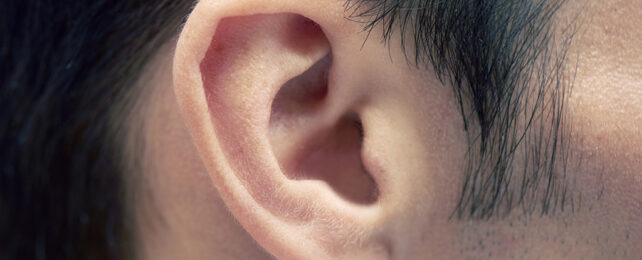The earlier Parkinson's disease is spotted, the better – for patients, their loved ones, and scientists working toward treatments or a cure.
Now, a new study has found that volatile organic compounds (VOCs) in earwax could carry chemical signals of the neurological disease.
The work builds on earlier findings suggesting that Parkinson's subtly alters body odor, through changes in sebum, the oily substance that naturally moisturizes our hair and skin.
The problem with trying to analyze sebum on the skin is that its exposure to air and the external environment makes it less reliable for clinical testing. Scientists led by a team from Zhejiang University wanted to take a look at ear wax – which is better protected.
Related: Caffeine Flips a Cellular Switch That May Slow Aging, Scientists Discover
"Early diagnosis and intervention are crucial for Parkinson's disease treatment," write the researchers in their published paper. "This study proposes a diagnostic model… that analyzes VOCs from ear canal secretions."
Scientists think those VOCs can be altered by inflammation, cell stress, and neurodegeneration in the brain. With the right tests, the team hypothesized that subtle signals for Parkinson's could show up in the ears.
The researchers took ear canal swabs from 209 study participants, 108 of whom had been given a Parkinson's disease diagnosis. By charting differences in earwax composition between people with and without Parkinson's, four VOCs stood out: ethylbenzene, 4-ethyltoluene, pentanal, and 2-pentadecyl-1,3-dioxolane.

These could potentially be used to identify Parkinson's in the future, acting as a foundation around which tests can be developed. First, though, this same analysis needs to be run on larger groups of people over longer periods of time.
The team then also trained an AI dataset using the same VOC data, producing a tool called an artificial intelligence olfactory system (AIO) that achieved a 94.4 percent accuracy rate in identifying people from the study with Parkinson's – a promising start, but only on a small sample of people so far.
"The AIO based analytical system underscores its potential for use in bedside medical diagnostic devices, aiding in earlier and more effective treatment for Parkinson's disease patients," write the researchers.
Current methods of diagnosing Parkinson's can involve a combination of clinical assessments and brain scans. The new research could potentially lead to a simple ear swab test that could make this diagnostic screening process quicker, cheaper, and capable of picking up Parkinson's earlier.
The findings could also help ongoing study to understand how Parkinson's gets started and how it might be stopped. Identified VOC changes could possibly be used as a chemical fingerprint, identifying other changes happening because of – or perhaps leading to – the disease.
"The next step is to conduct further research at different stages of the disease, in multiple research centers and among multiple ethnic groups, in order to determine whether this method has greater practical application value," says biochemist Hao Dong, from the Nanjing University of Aeronautics and Astronautics.
The research has been published in Analytical Chemistry.
